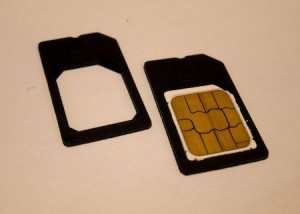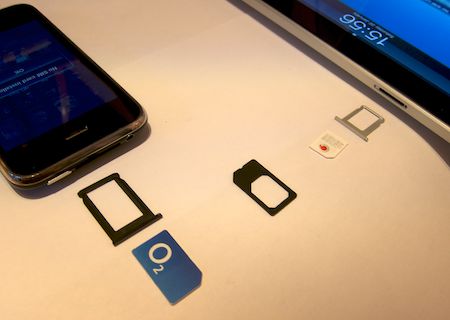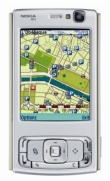I once went to a talk by Ben Goldacre, in which he said he was going to get a T-shirt printed. This was because he seemed to be giving the same response to lots of questions recently, and it would be easier if people could just read the answer as they walked up to him. The text would say, “I think you’ll find it’s a bit more complicated than that.”
It was a throwaway comment, but I often think of it, most recently as the British mobile phone networks start rolling out 5G and (because they spent so much on licensing the spectrum) are being very energetic about telling us how wonderful it is.
Yes, 5G can be faster. Potentially much faster. That’s the main marketing push, of course: you can play games more interactively and watch higher-quality videos more quickly. Marketing people like simple numbers. Which is fine, but it’s just an incremental change to 4G, and many people, including me, find it hard to get very excited about that.
I’m far from being an expert on mobile networks, but I have some friends who are, and I’m slowly learning that there are lots of other aspects to consider. Here are a few lesser-known facts about 5G:
- First, it makes it easier to add large numbers of devices to the network, for Internet-of-things-type applications. If you’re a farmer deploying thousands of soil-humidity sensors across your fields, for example, or a council putting environment-monitoring sensors on every lamppost, 4G wouldn’t be a very viable way to do it. 5G might be, though whether it will really be an affordable one remains to be seen. It probably won’t compete with technologies like LoRaWAN and SigFox for these low-bandwidth applications, where you often want battery-powered devices with a battery life measured in years. But no doubt it will find a niche in due course.
- One of the more interesting characteristics, for me, is the potential for much lower-latency connections. When your phone asks, say, a DNS server for the address of ‘statusq.org’, the amount of data actually being transmitted is small, and won’t be affected much by a big increase in bandwidth. What’s important is the round -trip time, and 5G offers the potential for this to be much smaller. (If you just want to send a postcard and get a reply, it doesn’t matter how big the postal service’s van’s are, but it does matter how fast they drive them to the destination and back.) This will affect how natural your video calls feel, because you won’t be talking over each other so much. It may one day affect how quickly your autonomous vehicle knows that a car ahead of you has slammed on its brakes. But in the meantime it will also speed up much more trivial things, like how quickly your email program can check whether you have new email.
- There are several different bits of radio spectrum – three main ones – that can be used by 5G. This is actually really important, and ordinary users need to be educated about it. Why? Well, as a rough approximation, it’s a basic law that higher-frequency radio signals can transfer more information, but over shorter distances. In the UK, we currently use the middle chunk of 5G spectrum, which is a sensible compromise, but gives you neither the highest speeds, nor the biggest coverage. In some parts of the USA, they are able to use the highest frequencies already, which means you can find YouTube videos of people getting phenomenal data rates, but if you go out and spend a thousand quid on a 5G phone here, you’ll never match them. Not for the next few years, anyway. More importantly, in my opinion, there is a lower-frequency range (below 1Ghz) which will allow transmission over greater distances — which is good for coverage — but at lower speeds. Here’s the important thing: When this becomes available in the UK, it will allow the phone companies truthfully to claim substantial geographic 5G coverage. But it’s also important to note that connections in this spectrum will be slower than 4G. So if you are mostly (like me) in an area that hovers between 3G and 4G, and you hear that – hurrah! – 5G coverage is finally available in your area, you may be very excited and go and spend lots of money on a 5G phone, only to find that things get slower. You have been warned.
So, yes, 5G is generally a good thing, or will be in a couple of years. And it has key advantages other than just streaming Netflix in higher resolution.
But perhaps the best news, if your family and friends start asking you about it, is that Ben did actually go ahead and create those T-shirts.
 The phenomenal success of SMS text messages is a fascinating example of many things – the need for an asynchronous communications mechanism between humans, the surprising adoption of what was originally a test facility for engineers, the merits of enforced brevity in communications, and our voluntary blindness to some costs when they’re expressed in a certain way.
The phenomenal success of SMS text messages is a fascinating example of many things – the need for an asynchronous communications mechanism between humans, the surprising adoption of what was originally a test facility for engineers, the merits of enforced brevity in communications, and our voluntary blindness to some costs when they’re expressed in a certain way.

 You know those coverage maps that mobile service providers create? The ones that tell you that, yes, there’s blanket 3G coverage in your favourite holiday destination, but when you get there you discover mean ‘slight 3G coverage for people sitting on top of their chimneys facing west under optimal stratospheric conditions’?
You know those coverage maps that mobile service providers create? The ones that tell you that, yes, there’s blanket 3G coverage in your favourite holiday destination, but when you get there you discover mean ‘slight 3G coverage for people sitting on top of their chimneys facing west under optimal stratospheric conditions’?
Recent Comments